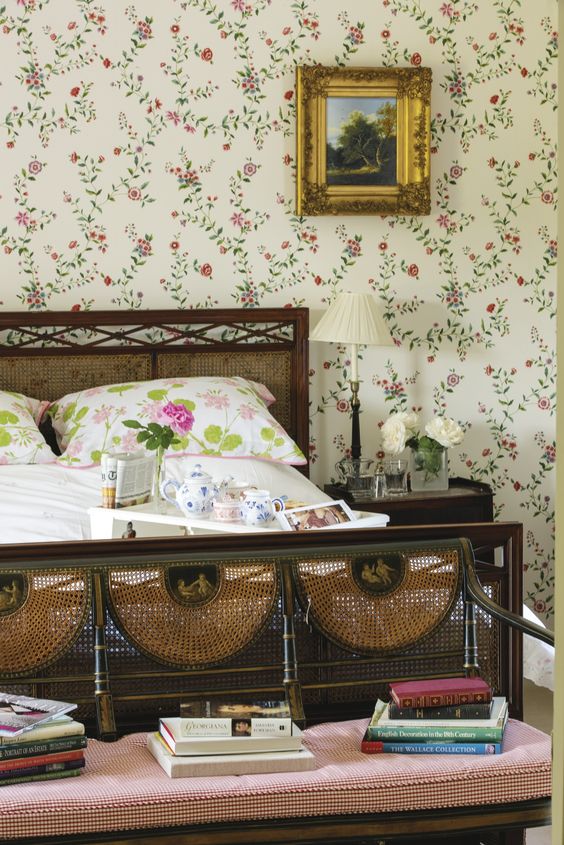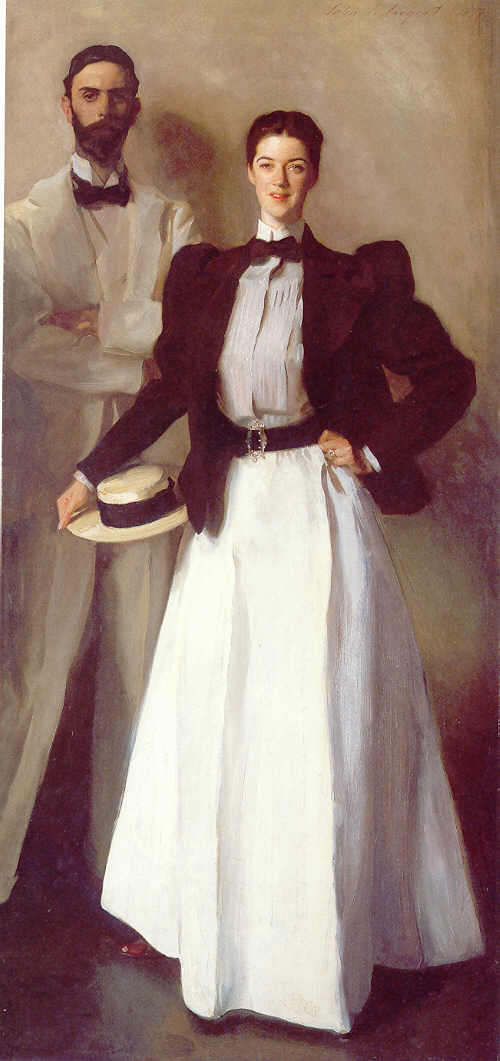The Duchess of Devonshire photographed by Cecil Beaton, Dec 1949, c) The Cecil Beaton Studio Archive at Sothebys.
On March 2 this year Sotheby's in London will hold the auction: Deborah Duchess of Devonshire, The Last of the Mitford Sisters. This last Mitford- painted by Lucian Freud, photographed by all of the great photographers of the 20th century, was perhaps the most beloved, and ultimately the most accomplished of all the Mitford sisters. The auction encompasses the possessions the Duchess selected from Chatsworth when she moved to The Old Vicarage at Edensor on the estate, which would be her last home.
On downsizing the Duchess wrote in Wait for Me! ~ "For me it is the unheard-of pleasure for the kitchen to be just two steps away and for it to be two steps the other way into the garden."
On downsizing the Duchess wrote in Wait for Me! ~ "For me it is the unheard-of pleasure for the kitchen to be just two steps away and for it to be two steps the other way into the garden."
PORTRAITS & FAMILY
Lot 124. The Mitford Family, photographic print, 1922.
“This auction paints a vivid picture of Deborah, Duchess of Devonshire, featuring mementoes, objects and pictures that tell the story of her remarkable life. A friend to many of the people who shaped her generation, she herself was a writer, an entrepreneur, a patron of the arts, and a much-admired beauty who also had the knack of absorbing the influences of other designers and decorators to develop her own style. The objects with which she chose to surround herself in her final home, the Old Vicarage at Edensor, were often moving, funny, or both, and usually had marvellous stories attached. The items in this sale capture the very essence of this endlessly captivating woman.”-David MacDonald, Sotheby’s specialist in charge of the sale
Lot 333. PORTRAIT OF DEBORAH, MARCHIONESS OF HARTINGTON by Mogens Tvede, pencil and watercolour, 1959. This portrait was painted at Edensor House on the Chatsworth Estate, Derbyshire, where Andrew and Deborah lived before moving into Chatsworth in 1949, and hung in the Duchess's Bedroom at the Old Vicarage, Edensor. TVEDE had painted Deborah's sister Nancy Mitford in 1948.
Lot 63. PORTRAIT OF THE DUCHESS OF DEVONSHIRE, SEATED IN AN INTERIOR by Duncan Grant, 1959.
“What is particularly wonderful about the sale is not only the sense one gets of the personal taste of Deborah, Duchess of Devonshire, but also of the value she placed on these objects that she chose to take with her from Chatsworth to the ‘Old Vic’. Together they form a rich collage that tells a remarkable story. I am sure the Duchess would have been quietly amused by this auction, and would undoubtedly have enjoyed correcting our cataloguers on the breed or species of animal which feature in many of her pictures. She would also have enjoyed telling the stories her possessions carry with them, as many of the lots have been ‘touched’ by the great and the good of the 20th century, among whose number Deborah, Duchess of Devonshire must certainly be counted.” -Henry Wyndham, Chairman of Sotheby’s Europe.
a DUCHESS &
...HUSBANDRY
Lot 215. A matched pair of large Continental earthenware hen tureens and covers, 19th century. one modelled with its head turned back, with four chicks under its breast and an egg behind and decorated in shades of red and purple, the other of lighter colouring, with five chicks under her breast and another behind, 32cm., 12.5 in. long
The Duchess writes, 'In middle age, when looking after my own chickens was too complicated, I gathered together pottery and china hens and ducks. They are less trouble than the live kind and are ever-present in my bedroom and sitting room. My favourites are a Belgium faience pair of life-sized speckled hens with heads turned back and beaks buried in their feathers, in that expression of poultry contentment hens wear after a dust bath on a spring day. One has a brood of chicks poking out from her breast, the other an egg. They are dishes - the top halves lids, heads and necks the handles. I bought them from one of those expensive antiques shops that catered for rich tourists in Park Lane, long since replaced by a travel agency. I remember stopping and staring at them with a great longing. The price seemed wild at the time and it certainly was. A recent valuation put the dishes at less than I paid twenty years ago, but the price is not the point when grabbed by such a longing. They have given, and continue to give, great pleasure'.
-Deborah Devonshire, All in One Basket, London, 2012, p. 44
Lot 130.
Lot 64. COCKEREL AND HENS IN A FARMYARD 1860, painted by William Huggins 1820 - 1884 The Duchess writes, 'I have fallen for paintings of hens too... William Huggins, taking time off from painting lions, is the artist responsible for another group of poultry, in which the iridescent green and black tail feathers of the cock are brilliantly painted." -Deborah Devonshire, All in One Basket, London, 2012, p. 45.
Lot 180. BUFF ORPINGTON HEN naturalistically worked and painted, the underside with a printed label about the sculptor's work and annotated in the Duchess's own hand 'hen - given me by Jayne / Aug 06'. A gift to Deborah, Duchess of Devonshire (1920-2014) from Mrs Jayne Wrightsman, New York in 2006
Lot 60. A French bronze and marble presse-papier in the form of a cockerel, second half 19th century
Lot.111 DEBORAH, DOWAGER DUCHESS OF DEVONSHIRE AND 'SKEWBALD MARE', 2004, Chromogenic print by David Dawson Signed, dated and titled ‘Lucian’s Studio.’ The Duke and Duchess were significant early patrons and acquired seventeen works by Freud for the collection at Chatsworth, including a mural of Cyclamen and a group of six family portraits. The painting: Skewbald Mare, featured in the offered lot, is now a cornerstone of the collection and was a favourite of the Duchess. During Freud’s extraordinarily turbulent social life, countless friends would come and go, but his bond with the Duchess remained a rare constant and lasted over fifty years. (from Sotheby's)
Lot 193. A PRIZE OX IN A BARN by W W Waite 1839 pen and ink and watercolour
The dining room (the painting is Lot 269 below)
LOT 118. DELPHINIUMS by Emma Tennant
Lot 269. WOODLANDS GAY WITH LADY SMOCKS by Reginald Rex Vicat Cole
Lot 290 A four-fold screen with one side decorated with cut-paper panels profusely decorated with cartoons, notables of the time and vignettes with some titles in manuscript Provenance: Probably William Spencer Cavendish, 6th Duke of Devonshire (1790-1858)
Lot 324. An Edwardian carved mahogany and cane bed, head and footboard, early 20th century.
Lot 362. THE DOWAGER DUCHESS OF DEVONSHIRE'S GERANIUM by Jo Self, titled, dedicated with love for Deborah and dated 31. July . 2006
Lot 331. A Pair of George II style upholstered armchairs specially commissioned loose covers in printed 'Chatsworth Rosebud' fabric, 1985. The pretty fabric which covers these armchairs was produced by Warners copying antique fabric found at Chatsworth. This was not the first time that Chatsworth linen stores yielded fabric which went on to inspire designers or was copied by them. The Duchess writes (Chatsworth, The House, London, 2002, p. 226). 'In 1985 Laura Ashley, then at the height of her fame, was brought here by a mutual friend. She was fascinated by the little bundles of chintzes and silks neatly tied with ribbons and put away in one of the cupboards by a housekeeper of yore. Laura took a number of them and in due course they were copied in her factory. There was great satisfaction in going into her shops and seeing rolls of the prettiest cottons imaginable sold to appreciative customers and knowing that the original came out of that grubby old cupboard.'
The delights of this sale are bountiful. Sotheby's has provided extensive quotations along with provenance-all of which are noted in the text above in links to Sotheby's Sale here.
It makes for great reading.



















































